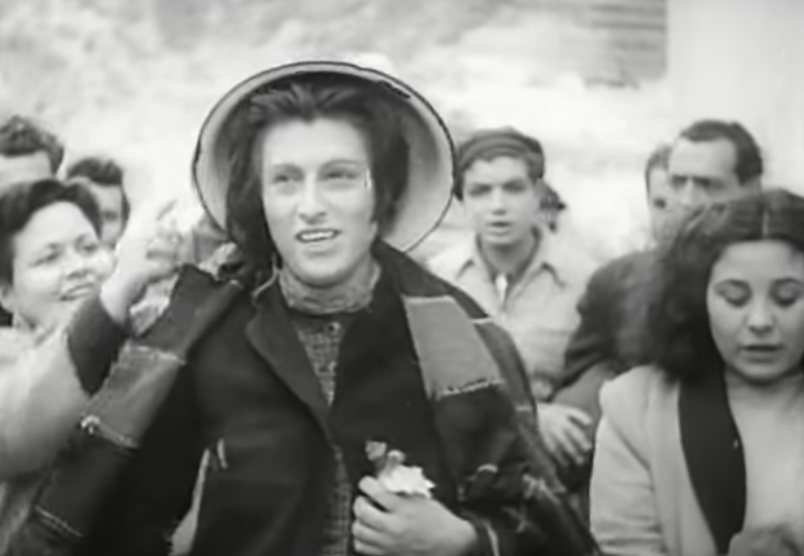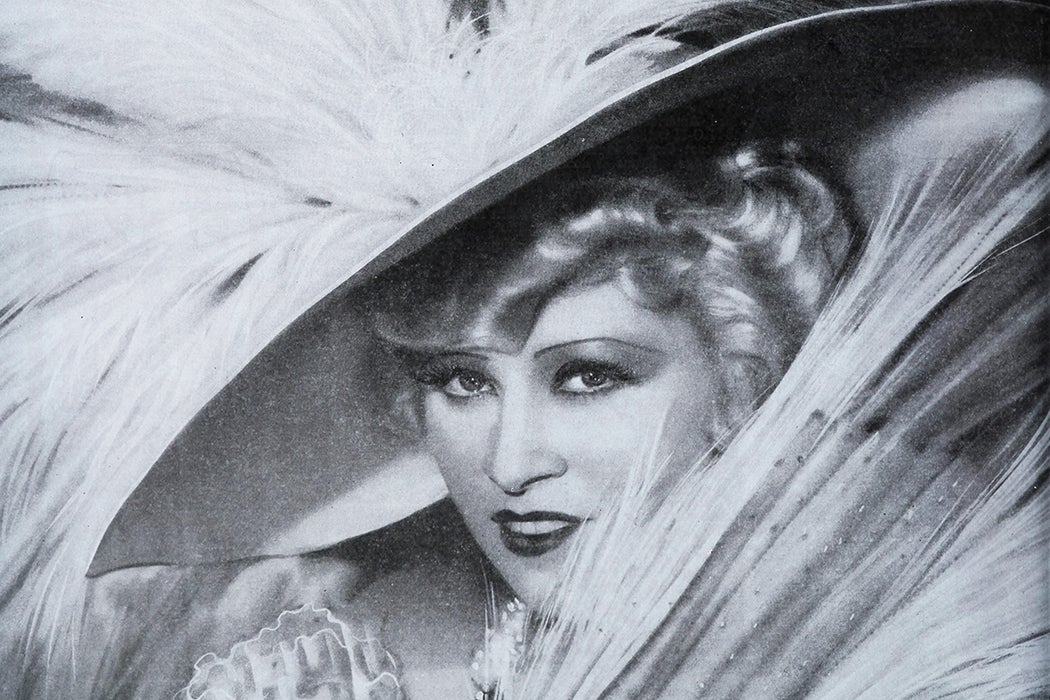When the Oscars began in 1929, the Supreme Court didn’t even consider movies art.
Fourteen years earlier, in 1915, the Court ruled that film was not entitled to legal protection as free speech. The state of Ohio had passed an ordinance authorizing a censorship board that could approve or reject any film seeking to be shown in the state. Mutual Film Corporation, a movie distributor, sued, claiming that the Ohio law violated the First Amendment.
The Supreme Court held that movies were “business, pure and simple,” no different from the pharmaceutical or banking industry, both of which were subject to federal regulation. This Supreme Court ruling, Mutual Film Corp. v. Industrial Commission of Ohio, helped place movies under the thumb of local, state, and in-house censors for decades. The decision finally was reversed in 1952, when a short, “sacrilegious” Italian drama earned Hollywood its First Amendment rights.
* * *
The moral panic over movies spread almost as soon as the industry got off the ground. The 1896 Thomas Edison short The Kiss scandalized viewers with its 18 seconds of passion, and as film grew more sophisticated, the hysteria only heightened. “The motion picture has entered every city and town of the country,” wrote National Board of Censorship member Orrin Cocks in a 1915 Journal of the American Institute of Criminal Law and Criminology article. “Many persons now recognize that the cultural and moral influence of ‘the movie’ must be carefully estimated. The intimate and intricate problems of life may be presented quite satisfactorily to the adult but may be dangerous to the unformed mind of a child.”

Several cities and states sought to curb the moral influence of movies through censorship laws. Chicago passed the first such ordinance in 1907, while Pennsylvania became the first state to enact movie censorship in 1911. These laws grew in popularity after the Supreme Court’s decision in the Mutual Film Corp. case. In its opinion, the Court ruled that movies were “not to be regarded as part of the press of the country or as organs of public opinion.” State and lower federal courts upheld this stance consistently, and by doing so, empowered censor boards.
These local censor boards were not exactly uniform. Pregnant characters or smoking scenes might be banned in one state but allowed in another. The inconsistent rules were a massive headache for Hollywood, which was also facing the threat of federal regulation.
Religious leaders enthusiastically supported censorship. As the communications scholar Gregory D. Black recounts, the Episcopalian minister Canon William Sheafe Chase served as an unofficial “national spokesman for federal censorship of movies” at the time. Chase, along with Reverend William H. Short, led more than 200 members of women’s organizations to Washington in 1926 to call for federal regulation of movies. Chase testified to the House Committee on Education that movies were a “threat to world civilization.”
Facing an assault on multiple fronts, the film industry devised its own system of censorship, one that it hoped would calm its many critics.
The Motion Picture Production Code—commonly known as the Hays Code—arrived in 1930. Co-written by a Catholic priest and the Catholic publisher of the Motion Picture Herald, it gave producers specific guidelines on what they could and could not show on film. “The code is a moral document,” the film producer and censor Geoffrey Shurlock wrote in The Annals of the American Academy of Political and Social Science. “It enumerates certain rules which must be followed to ensure that moral values shall not become confused where antisocial or criminal conduct is essential to the telling of the story.”
The Code took up 19 pages, but it followed three General Principles:
1. No picture shall be produced which will lower the moral standards of those who see it. Hence the sympathy of the audience shall never be thrown to the side of crime, wrongdoing, evil, or sin.
2. Correct standards of life, subject only to the requirements of drama and entertainment, shall be presented.
3. Law, natural or human, shall not be ridiculed, nor shall sympathy be created for its violation.
The Code had a system of enforcement. Created in 1934, the Production Code Administration (PCA) acted to compel Hollywood to follow the rules. The PCA fell under the umbrella of the Motion Picture Producers and Distributors of America (MPPDA), a large industry group that counted all major studio players as members. MPPDA producers had to submit story ideas and scripts to the PCA for review, as well as the final prints of their films. If a film passed, it received a seal of approval, which ran in the opening credits. If the PCA rejected a film, it was effectively barred from wide release, since all MPPDA members agreed “not to produce or distribute any pictures which did not bear the PCA Seal.”
Because the major studios also owned the movie theater chains where they sent their completed films for exhibition, the PCA shut rejected movies out of mainstream theaters. Production and distribution were inextricably linked. The producer of a rejected film could either appeal the decision to the MPPDA board of directors or make the PCA’s required edits. According to Shurlock, who was a member of the PCA, the censors usually won out. “The appeals as to finished pictures have averaged less than two each year, and in practically all cases, the PCA has been affirmed,” he wrote.
When movies defied the Code standards, their producers usually ended up capitulating to the PCA. Black points to It Ain’t No Sin, a 1934 Mae West comedy, as an early example. It Ain’t No Sin attempted to tell a typically raucous West story that included arson, theft, and constant sexual innuendo. Its script was rife with flagrant, almost gleeful Code violations. But when it came time for final review, the producers agreed to make enormous alterations and rename the movie Belle of the Nineties to secure a seal. This pattern became a familiar one, and it continued into the next decade.
* * *
The combined pressure from the PCA, local censor boards, and religious protestors meant that Hollywood had to submit to cuts and revisions on a regular basis. But everything changed when Joseph Burstyn imported The Miracle from Italy.

The Miracle was a short film from the Italian neorealist director Roberto Rossellini, known in art-house circles for provocative films like Rome, Open City. But The Miracle inspired an unprecedented controversy. The movie, as summarized in an eventual Supreme Court opinion, Burstyn v. Wilson, follows a “poor, simple-minded girl” tending goats on a mountain. She convinces herself that a passing man is St. Joseph and begs him to bring her to heaven. The stranger gives her wine, which makes her drowsy, and, in a “briefly and discreetly implied” sequence, he rapes her. When she wakes up and discovers she is pregnant, she believes it to be divine conception. She is ridiculed right out of town, and eventually gives birth alone—save for a goat—in an empty church.
The Miracle played at the 1948 Venice Film Festival and had a premiere in Rome before it made its way overseas. Burstyn, a distributor of foreign and independent films, first obtained a license to exhibit the movie in New York in 1949. But The Miracle wasn’t actually screened in the state until 1950, when it was packaged with the French films A Day in the Country and Jofroi into a trilogy titled The Ways of Love. It played at the Paris Theatre for 12 days before censors stepped in.
Edward T. McCaffrey, the New York City commissioner of licenses, found the movie “officially and personally blasphemous,” and instructed the theater to halt all screenings. It did, temporarily. The Miracle was not formally barred from theaters until 1951, when the New York Board of Regents rescinded the exhibition license, on the grounds that the movie was “sacrilegious.” Burstyn challenged the decision in court, but the New York Court of Appeals ruled against him. According to prosecutor and legal scholar Albert W. Harris, Jr., the appeals court agreed that The Miracle was “sacrilegious,” and proclaimed that “no religion, as that word is understood by the ordinary, reasonable person, shall be treated with contempt, mockery, scorn and ridicule.”
The case moved to the Supreme Court, where the entire trajectory of this area of law changed. The Court not only sided with Burstyn, but reversed its stance on movie censorship entirely. “It cannot be doubted that motion pictures are a significant medium for the communication of ideas,” the opinion read. “Their importance as an organ of public opinion is not lessened by the fact that they are designed to entertain as well as inform.” This 1952 decision stated that film was now entitled to freedom of speech protections and, as such, New York’s prior restraint on showing The Miracle was unconstitutional.
Harris argues that the Court’s ruling in Burstyn v. Wilson was actually a bit vague. The judges agreed that movies deserved First Amendment consideration, but they weren’t ready to rule out censorship completely. The court did not, for instance, void the New York censorship law that sparked the case. It also declined to offer an opinion on statutes “designed and applied to prevent the showing of obscene films.” Still, it did invalidate the old argument that censorship was necessary to preserve public morals, the justification used to prop up countless city and state censorship boards.
Writing two years after the decision, Harris estimated there were somewhere between 50 and 85 local censorship boards still cutting and banning movies across America. In 1953, New York banned the French film La Ronde because it was “immoral.” The appeals court affirmed this ruling, narrowing the broad label of “immoral” to “sexual immorality,” which Harris notes was awfully close to “obscene.” That same year, Ohio banned M, an American remake of a German film about a child killer, “on account of being harmful.” This word choice played directly off the language in the state’s censorship law, which only allowed movies “of a moral, educational, or amusing and harmless character.” The Ohio Supreme Court affirmed this decision.
Both cases went to the U.S. Supreme Court, where they were swiftly reversed.
The PCA was also weakening. Just one year after the Burstyn decision, the group rejected a romantic comedy called The Moon Is Blue for using language such as “virgin,” “seduce,” and “pregnant.” Its director, Otto Preminger, refused to make any cuts. He released the film without a seal through the independent distributor United Artists. The Moon Is Blue was able to book far more theaters than it could have just five years earlier, thanks to a 1948 Supreme Court decision ordering the major studios to divest from movie theaters. The Court ruled that the studios’ business model was a violation of federal antitrust law. Production and exhibition were no longer bound together, and the playing field got much more even for independent films struggling to be seen.
Weekly Newsletter
Burstyn v. Wilson sent the local censor boards down individual paths to irrelevancy and death. The PCA would hobble into the 1960s, but by the time it was abandoned in 1968 to make way for a new MPAA ratings system, it had already lost the culture war. The films that mattered were violent, foul-mouthed, and sexually frank: Who’s Afraid of Virginia Woolf?, Blow Up, Bonnie and Clyde. They found their audiences despite “immoral” and “harmful” content. It only took a few Supreme Court cases to get them there.
Editor’s note: The subheading of this article has been amended. The Hays Code was not “declared unconstitutional,” as the original subheading indicated. Rather, the Supreme Court decided that movies were entitled to First Amendment protections.







